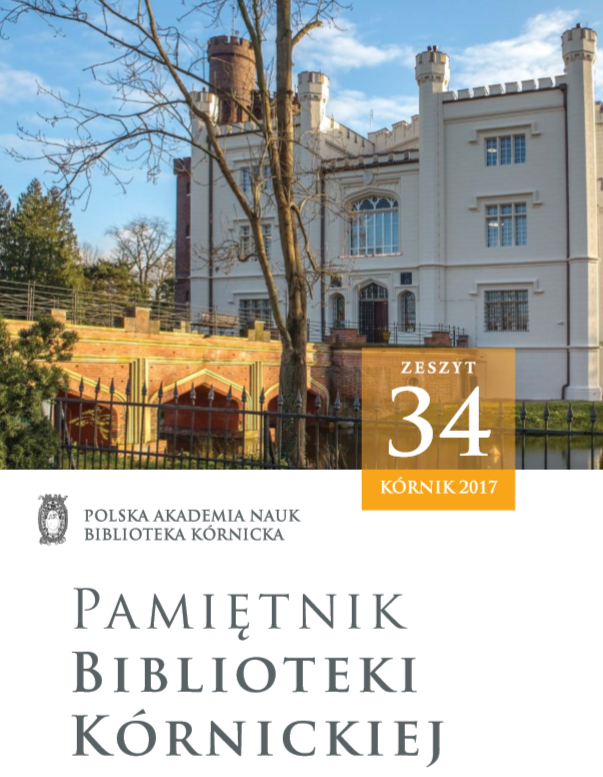CNOTA DZIWACKA – WŁAŚCICIELE KÓRNIKA W KRĘGU POZNAŃSKICH WOLNOMULARZY
EERIE VIRTUE – LORDS OF KÓRNIK WITHIN THE CIRCLE OF POZNAŃ FREEMASONS
Author(s): Rafał T. PrinkeSubject(s): Cultural history, Museology & Heritage Studies, Library operations and management, Social history, 18th Century, 19th Century
Published by: Biblioteka Kórnicka PAN
Keywords: Lords of Kornik; Cricle of Poznan Freemasons;
Summary/Abstract: The collection of the Kórnik Library of the Polish Academy of Sciences holds a number of rare and interesting books on freemasonry, including the first edition of Anderson’s Constitutions. Most of them were, however, purchased during the second half of the twentieth century. The only two items which are known to have belonged to Count Tytus Działyński (1796–1861) are a French manual of the Rite of Adoption of 1787 and a Polish anti-masonic pamphlet entitled Eerie virtue, undated but probably published in 1786 or the following year. It is the only known copy of it, which is one of the reasons for preparing a new edition of its text. The Castle Museum holdings also have rare objects of freemasonic interest, namely four loge badges of early nineteenth century. The present paper is the first attempt at identifying those lodges and ascribe the badges to members of the Działyński family, the heirs of Kórnik. The masonic activities of Ignacy Działyński (1754–1797), the uncle of Tytus, are well known, but his brother Ksawery’s (1756–1819) membership in the fraternity has only now been confirmed. It is argued that three of the badges belonged to him, because their respective lodges did not exist during Ignacy’s lifetime. The fourth badge most probably belonged to Tytus Działyński, who may have been introduced to freemasonry in his youth by his father. The research on these items evolved into a broader re-examination of the early history of freemasonry in Poland, which disproved a number of statements made in the monumental work of Ludwik Hass. Most importantly, it is showed that the Red Fraternity (Confrérie Rouge) of 1721 was not a freemasonic body (as claimed by Hass and now widespread in historical literature), and that the earliest documented Polish lodge was established in Poznań around 1735 (there may have been one operated by foreigners in Warsaw in 1729, but the information comes from much later and questionable tradition). Two appendices contain an edition of Eerie virtue and genealogical tables showing close family relationships of the Działyńskis of Kórnik with eminent Polish freemasons, including all except one Grand Masters of the Grand Orient of the Kingdom of Poland and the Grand Duchy of Lithuania.
Journal: Pamiętnik Biblioteki Kórnickiej
- Issue Year: 2017
- Issue No: 34
- Page Range: 149-213
- Page Count: 69
- Language: Polish

